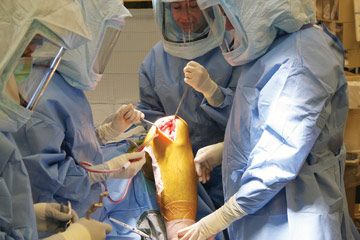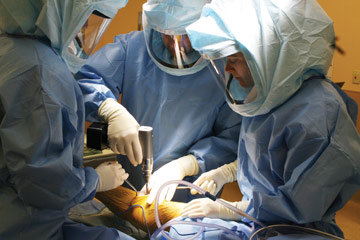Business is booming in orthopedics and my group of physician-owners is building a surgery center to capture the increasing number of spine procedures and joint replacements moving from inpatient hospitals to outpatient ORs. We broke ground on the $26.5 million, 33,000-square-foot facility last September and hope to open its doors by the end of this year. The center will have 6 ortho-centric ORs, a procedure room and 26 pre- and post-op bays.
Before putting shovels to dirt, we explored several ownership models, including partnering with a local hospital or a national ambulatory surgery center chain. Ultimately, our group entered into a joint venture with Saint Francis Hospital and Medical Center in Hartford, Conn. We'll own 65% of the center and gradually increase our share to 75%. As our minority shareholder, the hospital will own the rest.
Our surgeons will perform major surgeries in the new facility, including complex spine procedures and hip and knee replacements, so building the center close to an acute care hospital was important. In fact, it's going up across the street from our partner hospital, so we'll have quick access to its emergency room and all of its patient care services. Although location is the No. 1 rule in real estate, several other design elements are essential to success in outpatient orthopedics.
.svg?sfvrsn=be606e78_3)


.svg?sfvrsn=56b2f850_5)